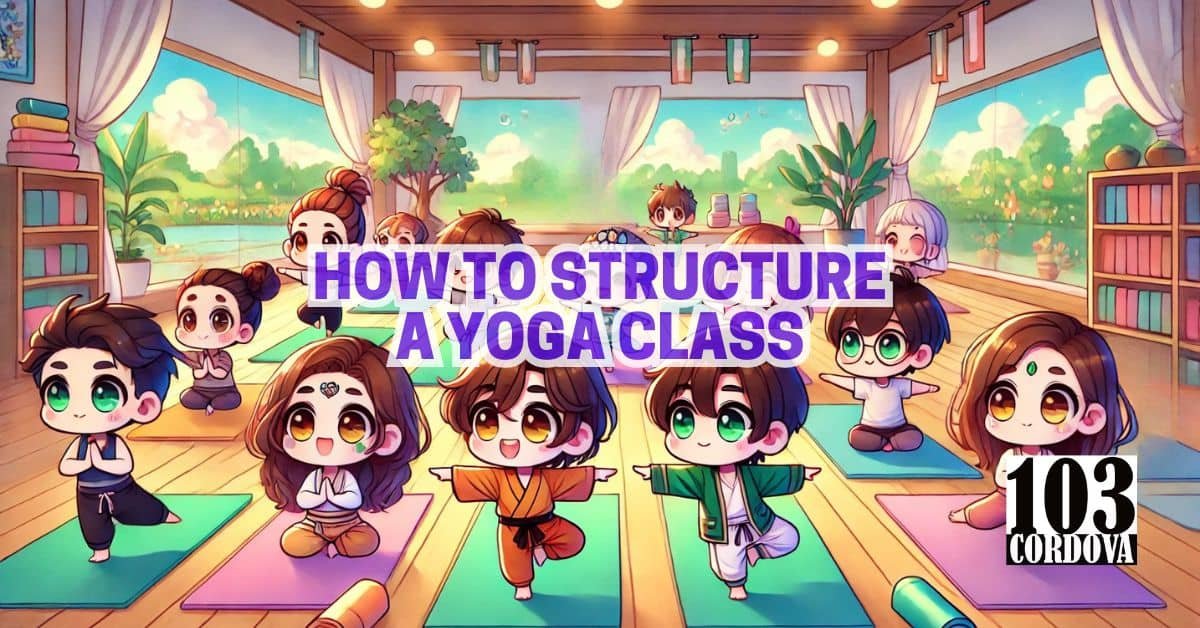A well-structured yoga class provides participants with a balanced mix of physical, mental, and emotional benefits.
Proper planning ensures the class flows smoothly, allowing participants to stay engaged and avoid unnecessary strain.
By organizing the session thoughtfully, instructors can help students build strength, flexibility, and focus.
A structured approach also reduces the risk of injury, especially for beginners.
Additionally, it creates a welcoming and supportive environment that motivates consistent practice.
1. Start Your Yoga Class with Focus: The Importance of an Intentional Opening
Opening a yoga class with focus helps participants settle their minds and connect with their breath.
Techniques like guided meditation, gentle breathing exercises, or a few moments of silence can establish this focus.
This time also sets a clear intention for the session, helping students align their efforts with a specific goal.
An intentional opening reduces distractions and allows participants to transition fully into the practice.
It lays the foundation for a mindful and present experience throughout the class.
🧘 Discovering the Transformative Power of Sahaja Yoga Meditation
2. Warm-Up Essentials: Preparing the Body for a Safe Practice
Warm-ups are a crucial step in any yoga session to prepare the body for movement.
These should include light stretches, joint rotations, and dynamic movements to gradually increase blood flow and flexibility.
Incorporating poses like cat-cow, gentle twists, or seated forward bends can ease tension in key areas.
Proper warm-ups also reduce the risk of muscle strain and make the body more receptive to deeper stretches later.
They create a smoother progression into more physically demanding parts of the class.
🧘 How to Select the Ideal Yoga Teacher Kit Bag for Your Classes
3. Balancing Flow and Static Poses for Strength and Flexibility
A good yoga class strikes a balance between flowing sequences and held postures.
Dynamic flows like sun salutations generate heat, improve endurance, and build coordination.
Static poses, such as warrior or triangle, allow students to focus on alignment and deepen their stretch.
This combination offers a comprehensive workout, improving both mobility and stability.
Alternating between movement and stillness keeps the class engaging and challenges the body in different ways.
🧘 The Unexpected Health Benefits of Mayurasana Yoga
4. How to Sequence Poses for Optimal Results in Your Yoga Class
Sequencing poses in a logical order is key to a safe and effective class.
Start with grounding poses to warm up the body and build a solid foundation.
Gradually transition into standing, balancing, or backbending poses that challenge strength and flexibility.
Include a mix of forward folds and twists to release tension and prepare for relaxation.
A well-sequenced class ensures participants leave feeling balanced and refreshed, rather than overstretched or fatigued.
🧘 Understanding the Emotional and Physical Advantages of Family Yoga
5. Incorporating Breathwork: How Pranayama Enhances Your Practice
Integrating breathwork into a yoga class strengthens the connection between body and mind.
Simple techniques like deep belly breathing can calm the nervous system and improve focus.
Advanced methods, such as alternate nostril breathing or kapalabhati, can energize or detoxify.
Teaching proper breathing during poses helps participants maintain control and deepen their practice.
Breathwork also offers mental clarity and can be a powerful tool for reducing stress.
🧘 How to Choose the Best Yoga Foam Pad for Comfort and Stability
6. Offering Variations for All Levels in Your Yoga Class
Providing variations for poses ensures inclusivity and safety for all participants.
Beginners can use props like blocks or straps to make poses more accessible.
Advanced students can be challenged with deeper expressions of poses or additional transitions.
Clearly demonstrating these options empowers participants to choose what works best for their abilities.
Offering modifications fosters a non-judgmental environment where everyone feels comfortable.
🧘 Why Promotional Yoga Mats Make the Perfect Gift for Fitness Lovers
7. Building Balance and Core Strength through Specific Poses
Including balance and core-focused poses in your class helps students develop stability and body awareness.
Poses like tree pose, plank, and side plank challenge the muscles that support posture and movement.
These exercises also improve concentration, as maintaining balance requires mental focus.
Engaging the core through poses like boat or bridge builds strength in the abdomen and lower back.
This focus on stability and strength enhances overall performance in yoga and daily activities.
🧘 How Yoga Can Support Emotional Healing and Stress Relief
8. The Importance of Cooling Down and Relaxation at the End of Class
Cooling down is essential to release tension and promote recovery after the main practice.
Use gentle poses like the child’s pose, supine twists, or reclining-bound angle to relax the body.
This phase helps lower heart rate and signals the body to shift into rest mode.
Adding deep, restorative breaths enhances the relaxation response and clears the mind.
A proper cool-down ensures participants leave feeling calm, refreshed, and ready for the rest of their day.
🧘 Is Investing in a Yoga Bolster Cushion Worth It? What You Need to Know
9. Ending with Reflection: Closing Your Class with Mindfulness and Gratitude
Ending the class with reflection allows participants to process the benefits of their practice.
Guided meditation or simple gratitude exercises can bring closure and foster positivity.
Encourage participants to focus on what they’ve achieved during the session, no matter how small.
This practice reinforces a sense of self-compassion and mindfulness.
A thoughtful closing leaves a lasting impression and encourages students to continue their yoga journey.
🧘 Understand the Basics of Yoga
10. The Role of Consistency in Structuring Effective Yoga Classes
Maintaining a consistent structure helps participants feel comfortable and confident in your classes.
Familiar elements, like starting with breathwork or ending with relaxation, create a rhythm that students appreciate.
Consistency also allows participants to track their progress over time and build upon previous sessions.
A predictable format provides stability while still allowing room for creativity in pose selection.
This balance ensures your classes remain both reliable and engaging.
💡 Conclusion
A thoughtfully structured yoga class offers a clear path for participants to gain physical, mental, and emotional benefits.
Each phase of the class, from warm-up to cool-down, plays a specific role in creating a holistic experience.
Structure helps instructors provide a safe and engaging environment for all skill levels.
It also encourages participants to practice regularly, knowing they can expect a meaningful session every time.
With intentional planning, you can ensure your yoga class meets the needs of every student.
🧘 Our Services
Discover the transformative power of yoga at our serene studio, conveniently located at 103 Cordova Tower, Marquinton Residences, Cirma Street, Sto. Niño, Marikina City.
We offer inclusive yoga classes tailored for all ages, helping you enhance flexibility, reduce stress, and achieve inner peace.
Reach out to us at 09176225780 or connect through Facebook and our website’s contact form for inquiries and class schedules.
Whether you’re a beginner or a seasoned yogi, our experienced instructors are here to guide you every step of the way.
Step onto the mat and into a healthier, more mindful lifestyle today!

